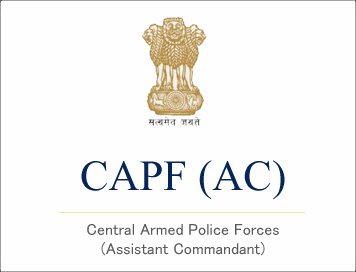केंद्रीय सशस्त्र पुलिस बल (CAPF AC) Exam Hindi Model Questions : SET-7
1. निम्नलिखित कथनों में से कौन से कथन सही है?
I बी एस-4 स्तर के वाहनों में नाइट्रस ऑक्साइड, कार्बन मोनो ऑक्साइड और पार्टिकुलेट मैटर का उत्सर्जन अत्यंत ही कम होता है।
II बी एस-4 स्तर के वाहनों के इंजन में केवल प्रति दस लाख 50 भाग सल्फर वाले ईंधन का ही उपयोग किया जा सकता है, वही बी एस-3 स्तर के वाहनों में 350 पीपीएम सल्फर वाले ईंधन का प्रयोग किया जाता है।
कूटः
a केवल I
b केवल II
c I एवं II दोनों
d न तो I न ही II
2. उपग्रह निर्माण हेतु इसरो का निजी क्षेत्र में साथ अनुबंध के सन्दर्भ में निम्नलिखित कथनों पर विचार करें-
I इसरो ने बेंगलुरु के हाईटेक रक्षा उपकरण आपूतिकर्त्ता अल्फा डिज़ाइन टेक्नोलॉजी को पहले निजी उद्योग के तौर पर चुना गया था।
II भारत को ई.वी.एम. (EVM) की पहली खेप दिलाने मे मदद करने वाले कर्नल वाई.वी.रेड्डी इस संघ के नेतृत्वकर्त्ता हैं।
III अल्फा डिज़ाइन टेक्नोलाॅजीज, बेंगलुरु के नेतृत्व वाले एक संघ को भारत के नेविगेशन तंत्र के लिए दो पूर्ण उपग्रह बनाने का काम दिया गया है।
इनमें से कौन सा / से कथन सत्य है ?
a I एवं II
b I एवं III
c II एवं III
d I, II एवं III
3. मानव विकास सूचकांक में भारत का स्थान निम्नलिखित में से कौन सा है?
a 131 वें
b 132 वें
c 133 वें
d 134 वें
4. निम्नलिखित कथनों में से कौन से कथन सत्य है-
I चेनानी-नैशारी सुरंग भारत की सबसे लंबी सुरंग है।
II यह सुरंग जम्मू और उधमपुर से रामबन, बनिहाल और श्रीनगर की यात्रा करने वालो को सुरक्षित एवं सभी मौसमों का सुरक्षित मार्ग मुहैया कराएगी।
कूट:
a केवल I
b केवल II
c I एवं II दोनों
d न तो प न ही पप
5. फाॅल्कन 9 राॅकेट बूस्टर के संदर्भ में निम्नलिखित कथनों पर विचार करें-
I अमेरिका की अंतरिक्ष कंपनी ने फॉल्कन 9 राॅकेट बूस्टर को दोबारा लाॅन्च किया।
II फाॅल्कन 9 राॅकेट बूस्टर लक्समबर्ग आधारित उपग्रह आपरेटर एस. ई. एस के लिए एक संचार उपग्रह को कक्षा में स्थापित करने के लिए ले गया है।
III इस उड़ान से कक्षा में एस. ई.एस उपग्रहों की संस्था बढ़कर 165 हो गयी है।
इनमें से कौन सा/से कथन सत्य है-
a I एवं II
b II एवं III
c I एवं III
d उपरोक्त सभी
ANS: 1(c), 2(b), 3(a), 4(c), 5(a)






